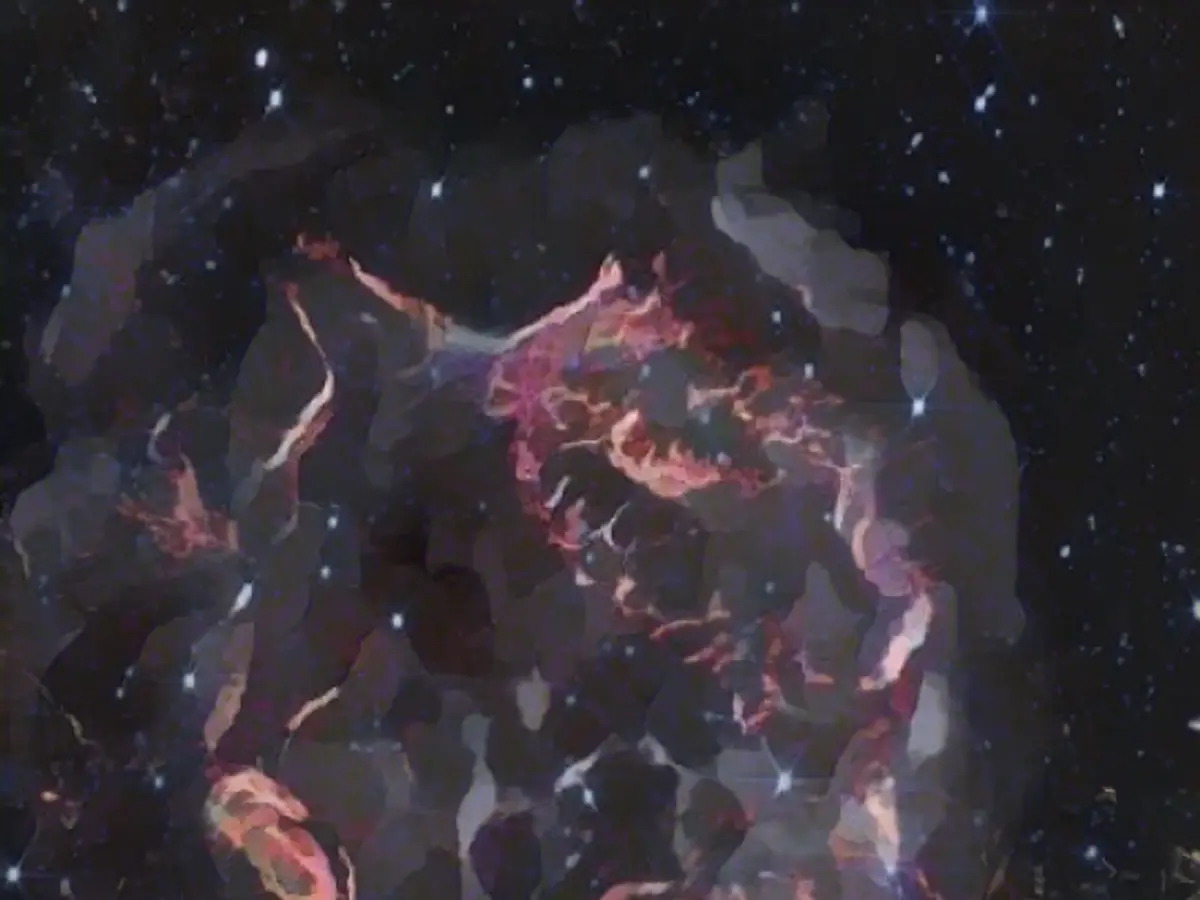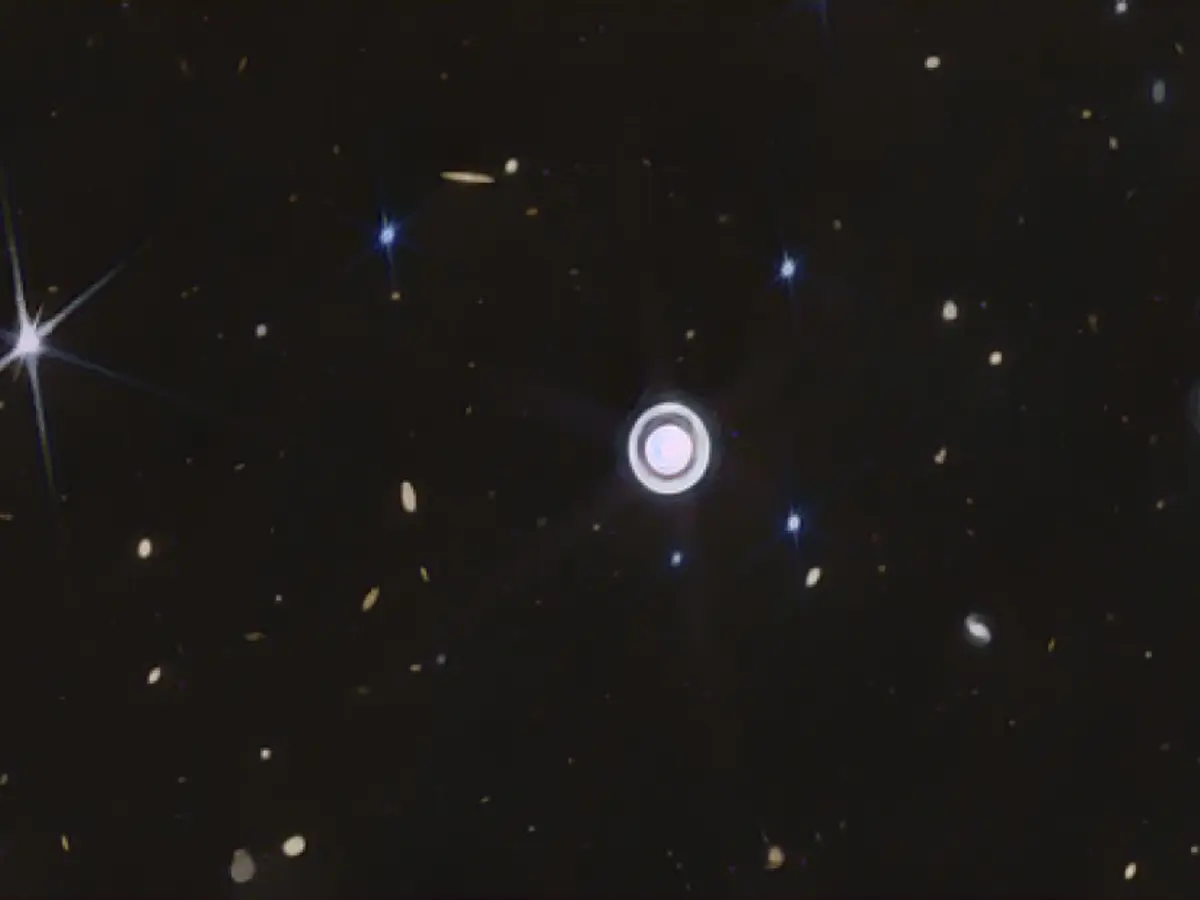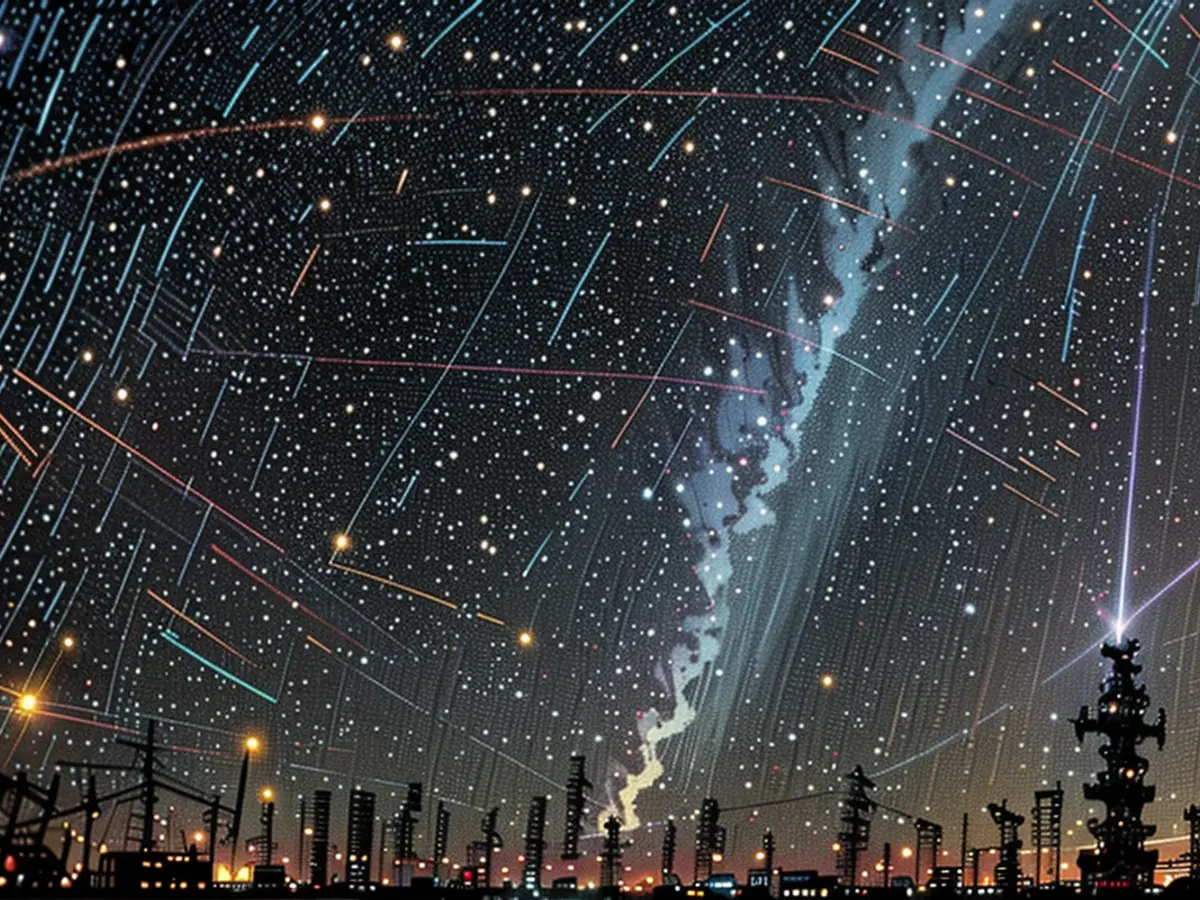Unveiling Uranus' Mysteries with Webb's Infrared Gaze
James Webb Space Telescope (JWST) is famous for capturing breathtaking images of distant cosmic objects, but it also sheds light on our own solar system's hidden corners. In 1986, Voyager 2 provided the first clear view of Uranus as a shimmering blue world when it passed by the seventh planet. But JWST's infrared observations reveal finer details that were often missed in previous telescope images.
In 2022, astronomers classified the exploration of Uranus as a top priority, and JWST is proving to be a powerful tool in the quest to understand this icy giant. The NASA-released image from JWST, released August 29, presents more intriguing details than the earlier April image.

Uranus' Hidden Gems
Weaker inner and outer rings of Uranus sparkle in the newest JWST images, along with the planet's closest ring, Zeta-Ring — despite its weak and diffuse presence. Nine of Uranus' 27 known moons can also be observed as blue specks in the newest images, including several smaller moons located within the rings.
These "Literary Moons" are named after Shakespearean characters, such as Rosalind, Puck, Belinda, and Perdita.
Uranus' Unique Seasons
A prominent white cap on Uranus, called the equatorial stripe, dominates the center of the newest image. This polar cap means Uranus will soon experience its summer solstice, with the sun shining directly on the planet's northern pole, as it’s expected to happen in 2028.
Uranus is unique for its sideways rotation with a tilt of 98 degrees, leading to extreme seasons. It takes approximately 84 Earth years for Uranus to complete one orbit, and its day is only about 17 hours long. JWST's infrared observations have revealed storms occurring near both the north and south poles, and scientists are closely observing changes in the planet's atmosphere and weather patterns as its summer solstice approaches.
In addition to its storms, JWST's observations may help scientists better understand the meteorological factors impacting these weather systems, which could provide insights into Uranus' complex atmosphere.
Future Encounters with Uranus
Voyager 2 has been the only spacecraft to fly by Uranus and Neptune on the edge of the solar system, leaving many unanswered questions about these ice giants. Recent research has discovered X-rays from Uranus and a peculiar "blip" in the data from Voyager 2, which hints that it passed through an enormous plasma bulge, possibly lifting part of Uranus' atmosphere into space.
JWST's observations of Uranus could also aid in understanding the composition of thousands of ice giant exoplanets discovered outside the solar system. By examining how these extrasolar planets formed, scientists might discover new insights into the development of our solar system.
Source:
**Enrichment Data:**
The James Webb Space Telescope has not directly provided new insights into Uranus' rings and moons as detailed in the search results. The most significant discoveries in this area come from data collected by other space telescopes such as Hubble, and published scientific papers and articles, like the 2007 discovery of the "Shepherd Moons" and the "collar" structures surrounding Uranus' main rings, described in the NASA Science article[1].
However, JWST's data has revealed major breakthroughs in other fields, such as discovering over 200 galaxies within the first 6 months of operation[4]. The observatory also has the potential to observe the early universe's first light and peak of reionization, providing vital insights into cosmology[3]. In addition, JWST has unlocked new details about the composition and physical properties of exoplanets using a technique called spectroscopy.
For further exploration of Uranus' moons, you may find interest in more detailed articles from the NASA webpage, such as the NASA Solar System Exploration article detailing the discovery of additional moons in Uranus' system[2].







